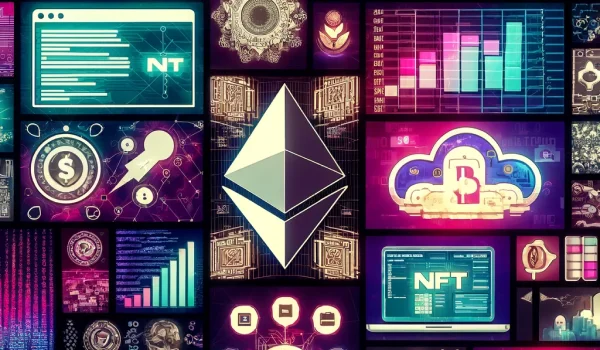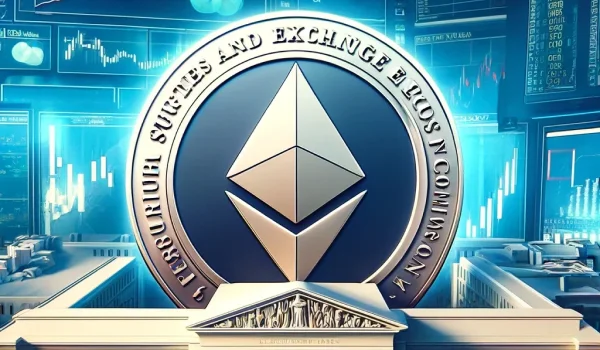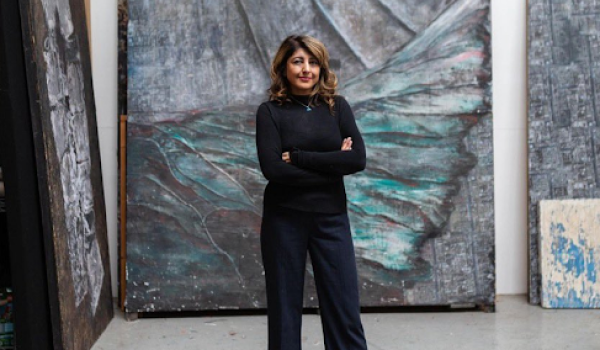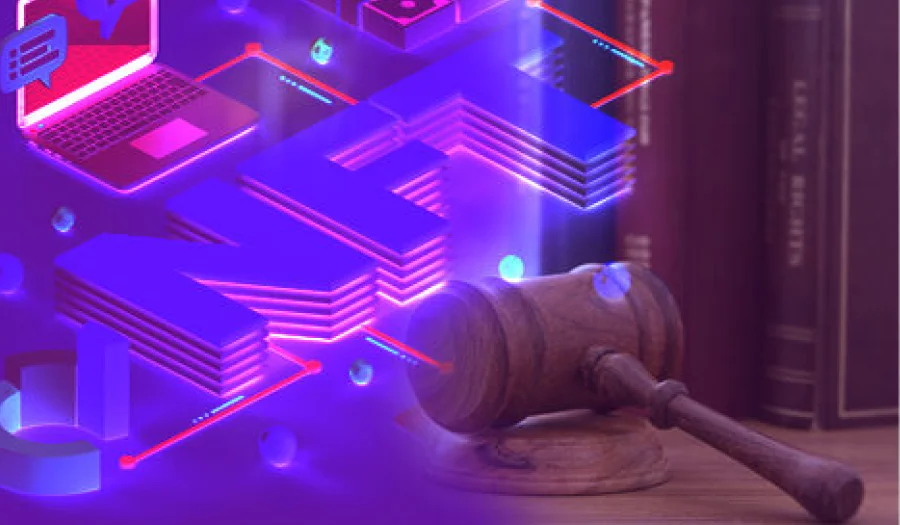Welcome to the exciting world of NFTs! In this comprehensive tutorial, we'll guide you through every step of creating and minting your first Non-Fungible Token (NFT). Whether you're an artist, a digital creator, or simply curious about the blockchain revolution, this guide is for you.
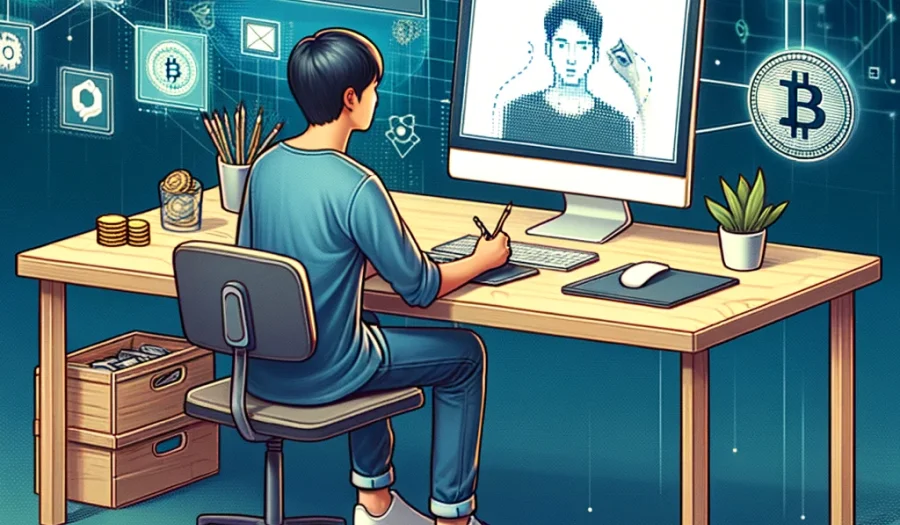
Understanding the Basics: Ethereum and Blockchain
What is Blockchain Technology?
Before diving into the world of NFTs, it's crucial to understand the basics of blockchain technology. Blockchain acts as a decentralized digital ledger that records transactions across many computers. This ensures that once recorded, the transactions cannot be altered retroactively, providing a foundation of transparency and security.
The Role of Ethereum in NFTs
Ethereum, which is the most popular platform for NFTs, extends beyond being just a cryptocurrency. Launched in 2015, Ethereum is a platform for creating decentralized applications (dApps) with smart contracts. These contracts are self-executing with the agreement terms directly written into code, running on the Ethereum Virtual Machine (EVM). For further details, our article, "Ethereum 101: The Basics of the Biggest Blockchain for NFTs", offers an excellent introduction to Ethereum's architecture and its significance in hosting NFTs.
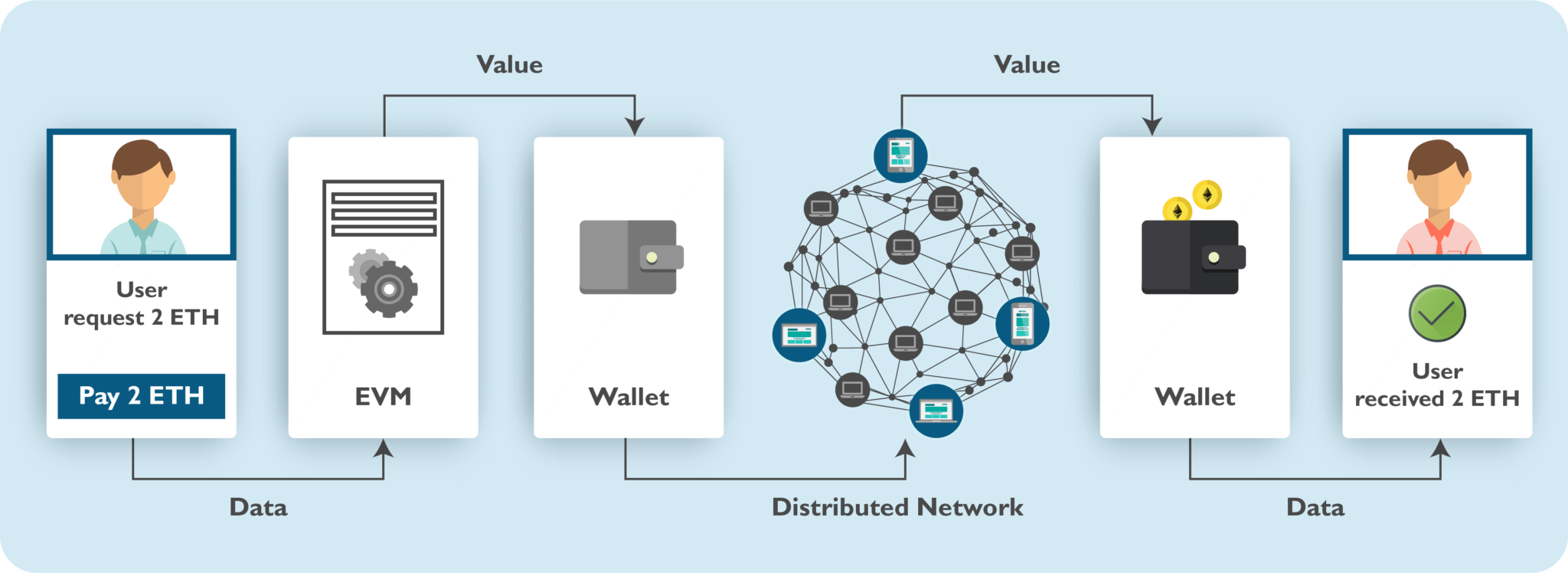
Ethereum Virtual Machine (E.V.M.)
NFTs and Ethereum's Standards
NFTs, or Non-Fungible Tokens, represent unique digital assets that signify ownership or proof of authenticity. They differ from cryptocurrencies like Bitcoin, as each NFT has a unique digital signature. Ethereum supports NFTs through the ERC-721 standard, which allows for complex ownership rules, and the ERC-1155 standard for semi-fungible tokens.
Ethereum’s Evolution and Future
Understanding Ethereum is key to comprehending NFTs. The platform's upcoming upgrade, Ethereum 2.0, aims to enhance scalability, security, and sustainability by transitioning from a proof-of-work (PoW) to a proof-of-stake (PoS) consensus mechanism. This upgrade highlights Ethereum’s evolving role in the NFT ecosystem and its commitment to reducing environmental impact.
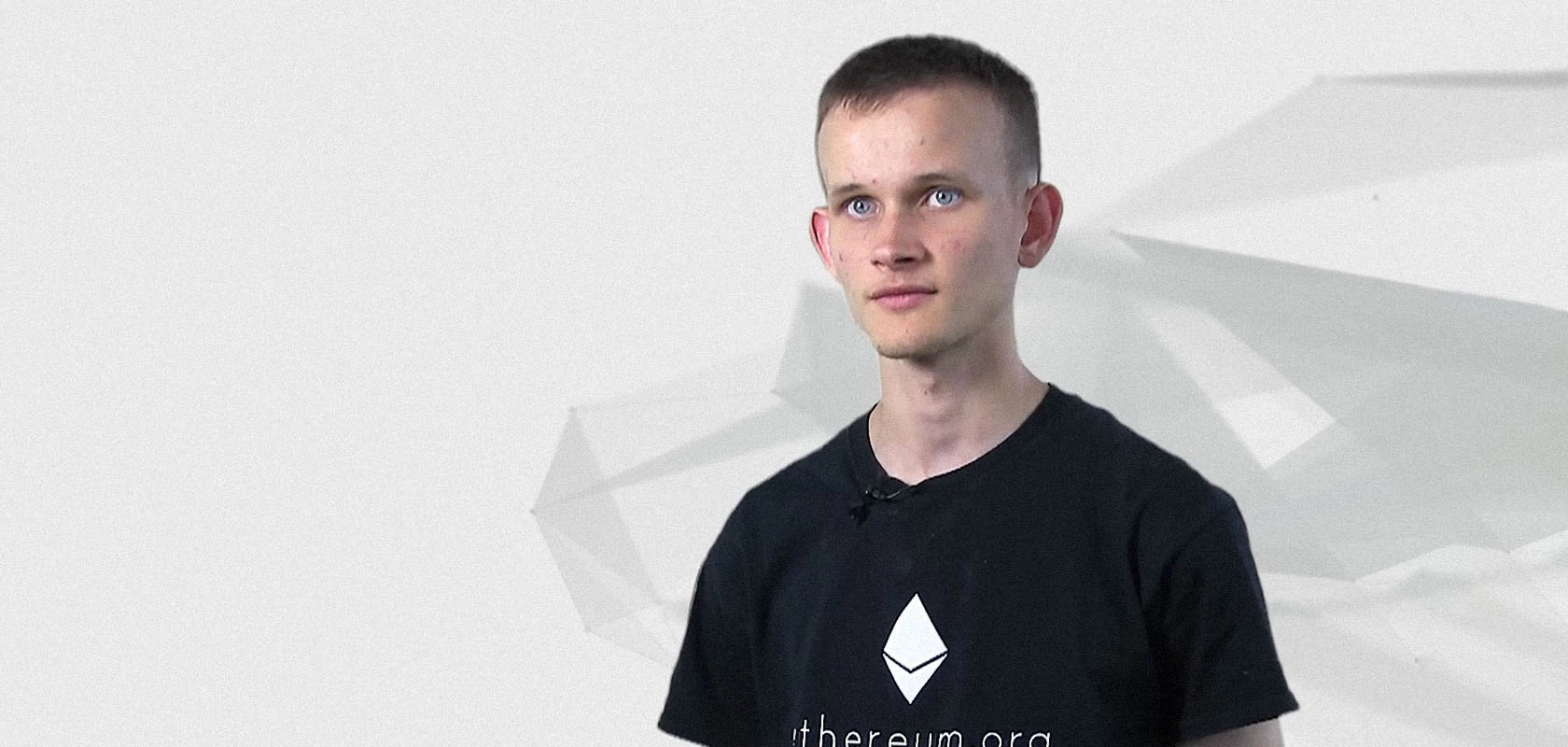
Vitalik Buterin, Founder of Ethereum
In summary, grasping the fundamentals of Ethereum and blockchain technology is vital for anyone venturing into the NFT space. It’s the bedrock of the current NFT market and will continue to shape its future.
Choosing the Right Blockchain Platform
The choice of blockchain platform can significantly impact the visibility, liquidity, and overall success of your NFT. Our comprehensive guide, "Exploring NFTs: A Guide to Blockchain Platforms", compares various platforms, taking into account factors like gas fees, audience, and environmental considerations. Whether you choose Ethereum, with its widespread adoption, or other platforms like Tezos or Flow, each has unique features that can align with your artistic vision and ethical stance.
Comparison of Popular NFT Marketplaces
Choosing the right marketplace is as crucial as selecting the blockchain. Here's a comparison of some of the most popular NFT marketplaces:
| Feature/Marketplace | OpenSea | Rarible | Foundation | SuperRare |
| Supported Blockchains | Ethereum, Polygon, Klaytn, Solana | Ethereum, Flow, Tezos | Ethereum | Ethereum |
| Transaction Fees | 2.5% per sale | 2.5% per sale | 15% on primary sales | 15% on primary sales |
| Categories of NFTs | Art, Music, Domain Names, Collectibles | Art, Photography, Music, Domains | Digital Art, 3D Art | Digital Art |
| Creator Earnings | 10% royalty (configurable) | Configurable royalty | 10% royalty | 10% royalty |
| Notable Features | Largest marketplace, diverse range of NFTs | Community-owned, RARI token | Curated artists, high-quality art | Focus on art curation, high-quality works |
| Wallet Compatibility | MetaMask, Coinbase Wallet, and others | MetaMask, WalletConnect, Fortmatic | MetaMask, WalletConnect | MetaMask |
| Audience | Broad, including beginners and experienced users | Community-focused, artists and collectors | Curated, primarily artists and collectors | Exclusive, focusing on high-end collectors and artists |
Note: The information provided in this table is subject to change as the platforms evolve and update their features. Always verify with the latest data for accuracy.
Step-by-Step Guide to Creating and Minting Your NFT
Step 1: Conceptualize Your NFT
Begin by brainstorming the concept behind your NFT. What story do you want to tell? Are you focusing on digital art, music, virtual real estate, or something more abstract? Consider what makes your NFT unique in the burgeoning digital marketplace. Here are some examples to inspire your concept:
- Digital Art: These are among the most well-known types of NFTs, ranging from digital paintings and animations to 3D models. An iconic example is Beeple's artwork, which sold for millions at auction.
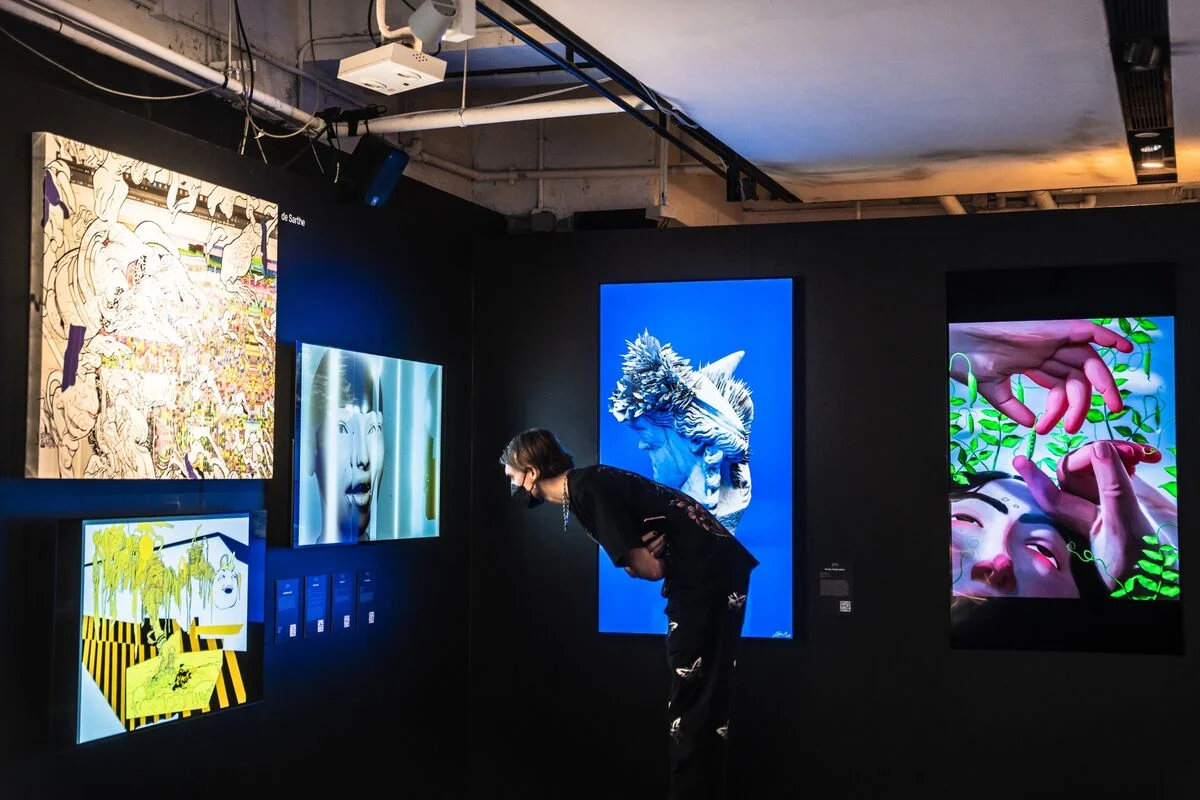
Artwork at the Digital Art Fair in Hong Kong. Photographer: Lam Yik/Bloomberg
- Music: Tokenize your musical creations, whether they are full songs, albums, or exclusive audio clips. These NFTs can also offer perks like exclusive access to concerts or interactions with the artist.
- Virtual Real Estate: In virtual worlds like the Metaverse, digital properties can be bought, sold, or rented as NFTs, used for events, exhibitions, or personal spaces.
- Abstract Concepts: This category is diverse and can include:
-
- Domain Names: Unique blockchain-based domain names.
- Virtual Clothing and Accessories: Exclusive designer wear for avatars in virtual worlds.
- Collectibles: Digital versions of traditional collectibles like trading cards.
- Twitter Tweets: Tokenized unique tweets.
- Virtual Experiences: Interactive experiences, virtual tours, or access to digital events.
-
Each type of NFT offers a unique way of representing ownership and value in the digital world.
Step 2: Digitize and Prepare Your Work
Ensure your creation is in a digital format compatible with your chosen NFT platform. This step might involve different approaches depending on the original form of your artwork:
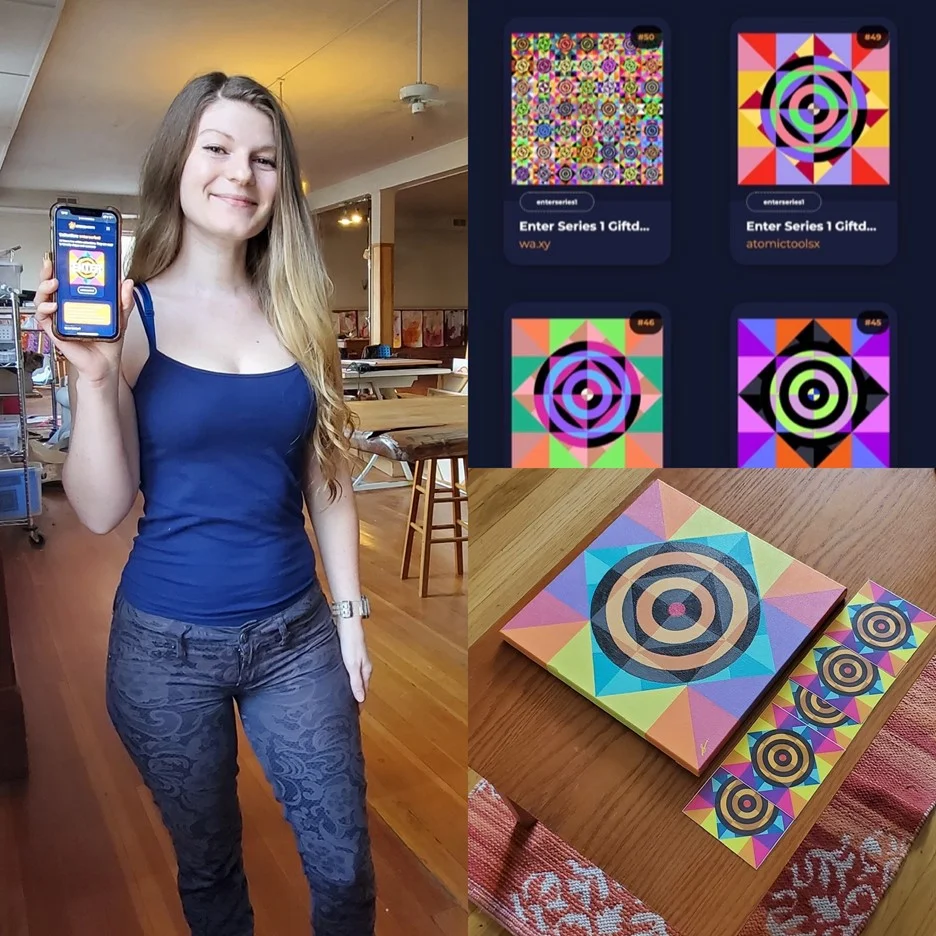
Artist, Stacy Neale
-
Scanning Physical Artwork: If your artwork is in a physical form like a painting or drawing, use a high-resolution scanner. Place your artwork evenly on the scanner bed, choose a high DPI (dots per inch) setting for clarity, and save the scan in a format like JPEG or PNG.
-
Finalizing Digital Designs: For art initially created digitally (like digital paintings or 3D models), the focus is on ensuring the file's readiness. Open your artwork in its original creation software, make any final edits, and export it in a high-quality format such as PNG or TIFF, which preserves the detail and color integrity.
- Optimizing File Size and Resolution: Balance between file size and image quality is crucial. Large files might be challenging to upload, while low-resolution images may not showcase your artwork effectively. Adjust the resolution and compress the file as needed, ensuring it meets the platform's requirements while still displaying your artwork clearly.
This process is vital to ensure your work retains its quality when uploaded and is presented in the best possible way in the NFT marketplace.
Step 3: Select a Blockchain Platform
Choosing the right blockchain platform is crucial for the success of your NFT. Different platforms offer various features, costs, and audiences:
-
Research Popular Platforms: Ethereum is widely recognized for its robust support for NFTs, offering a large market and comprehensive features. However, its transaction fees (gas fees) can be high. Alternatives like Binance Smart Chain or Flow provide lower fees and unique features. Research each platform's advantages, limitations, and compatibility with your NFT's nature.
-
Consider Your NFT's Needs: If your NFT requires complex smart contracts, like those for interactive or evolving art pieces, Ethereum might be a better choice. For simpler, more cost-effective transactions, Binance Smart Chain or Tezos could be suitable.
-
Set Up a Digital Wallet: A digital wallet that supports your chosen blockchain is essential for storing and transacting your NFT. For Ethereum, wallets like MetaMask or MyEtherWallet are popular. Ensure that your wallet is secure and compatible with the NFT marketplace you plan to use.
-
Integrate with the NFT Marketplace: Make sure the blockchain platform you choose integrates seamlessly with the NFT marketplace where you intend to list your work. This compatibility is essential for a smooth minting and selling process.
By carefully selecting a blockchain platform that aligns with your NFT's requirements and setting up a compatible digital wallet, you lay a solid foundation for your entry into the NFT space.
Step 4: Mint Your NFT
Minting transforms your digital asset into a marketable NFT on the blockchain. First, upload your work to the chosen NFT platform. Add important metadata like the title, description, and any other relevant details that describe your NFT. Then, follow the platform's process to mint your NFT, which typically includes verifying the information and confirming the creation of the NFT. This step is where your digital art officially becomes a part of the blockchain.
Step 5: Market and Sell Your NFT
Once your NFT is minted, the next step is to list it for sale. Set a price that reflects your costs, the uniqueness of your NFT, and current market trends. Use social media, online forums, and NFT communities to promote your NFT. Engaging storytelling, highlighting unique aspects of your NFT, and connecting with potential buyers are key to successful marketing. Consider also participating in virtual galleries or NFT exhibitions for added exposure.
Step 6: After-Sale Considerations
After selling your NFT, stay engaged with the community. Many platforms offer the option to set up royalties, allowing you to earn a percentage from any future resales of your NFT. This not only provides ongoing revenue but also keeps you connected to your artwork's journey. Continue to build your reputation within NFT communities and stay updated with the latest trends and opportunities. Your ongoing involvement can lead to more connections, collaborations, and future sales.
Legal Considerations in NFT Projects
Navigating the legal waters of NFTs is crucial. For detailed advice, visit Top 12 Advices to Navigate Legal Waters in NFT Projects. Understand copyright laws, intellectual property rights, and contractual terms relevant to NFTs. Be aware of potential legal pitfalls to protect your work and interests effectively.
Conclusion
Embarking on the journey of creating and minting an NFT is a thrilling endeavor that blends creativity, technology, and entrepreneurial spirit. This comprehensive guide equips you with the knowledge to start your journey in the NFT world confidently. Utilize the resources provided, understand the nuances of this digital frontier, and let your creativity shine in the burgeoning world of NFTs!


 9 mins read
9 mins read